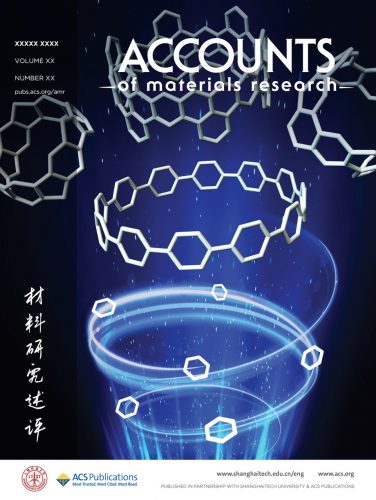


Chemical synthesis of carbon nanorings and nanobelts
Yuanming Li, Hideya Kono, Takehisa Maekawa, Yasutomo Segawa, Akiko Yagi, Kenichiro Itami
Acc. Mater. Res. 2021, ASAP. DOI: 10.1021/accountsmr.1c00105
The discovery and creation of new forms of carbon have always transformed the scientific landscape. For example, the discoveries of fullerenes, carbon nanotubes (CNTs), and graphenes have opened doors to the science of nanometer-sized carbon allotropes, otherwise known as nanocarbons. Since then, researchers worldwide have unveiled their outstanding physical and chemical properties, and a number of applications and technologies have arisen in not only materials science but also biological research fields. The synthesis and study of this privileged class of “single-molecule” compounds has become one of the most engaging subjects in chemistry and holds huge promise to establish new fields in molecular science. However, there have been huge gaps between established small-molecule chemistry and nanocarbon science. In the particular case of CNTs, it is still not possible to access structurally uniform CNTs. Although a wide range of synthetic methods have been reported, CNTs are generally accessed as a mixture of various structures. One logical strategy to achieve full synthetic control over CNTs is to build up from a template molecule with structural precision (the so-called “growth-from-template” strategy), where a short CNT segment molecule represents an initial synthetic target. To this end, organic synthesis techniques are our most powerful tools to synthesize short CNT segments such as carbon nanorings and carbon nanobelts. This Account highlights our 16-year campaign in the synthesis and application of carbon nanorings and carbon nanobelts. The first topic is the synthesis of carbon nanorings (cycloparaphenylenes) as substructures of CNTs. The second topic is the synthesis of armchair and zigzag carbon nanobelts, which consist solely of fully fused hexagonal rings and provide a continuous double-stranded cylindrical framework. The third topic is the synthesis of methylene-bridged cycloparaphenylene, an aromatic belt containing nonhexagonal rings, in which the cyclic paraphenylene chain is ladderized by methylene bridges. This nonalternant aromatic belt can be regarded as segments of nonconventional CNTs. During our extensive investigation, we found that the careful design of strainless macrocyclic precursors is crucial to the success of the synthesis of these curved π-conjugated nanorings and nanobelts. In the final section, some of the representative size-dependent properties of these nanorings/belts, including their HOMO−LUMO energies, strain energies, and photophysical properties, are summarized. In addition to basic properties, the utilization of these compounds as supramolecular hosts and organic materials is also briefly introduced. We hope this Account will inspire the development of new forms of nanocarbon molecules that would open doors to new fields and applications.
cover art: by Issey Takahashi (ITbM) Selected as a cover picture!!

A new URL for Dr. Yuanming Li (now he is a professor in Fuzhou University, China):https://orglab.fzu.edu.cn/html/yjdw/js/2021/06/28/18839e82-409a-4ad2-94a2-9fc5c2cfad3e.html